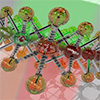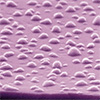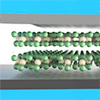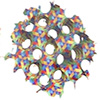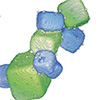Restless legs syndrome
Restless legs syndrome (RLS), now known as Willis-Ekbom Disease (WED), is generally a long-term disorder that causes a strong urge to move one's legs. There is often an unpleasant feeling in the legs that improves somewhat by moving them. This is often described as aching, tingling, or crawling in nature. Occasionally, arms may also be affected. The feelings generally happen when at rest and therefore can make it hard to sleep. Due to the disturbance in sleep, people with RLS may have daytime sleepiness, low energy, irritability and a depressed mood. Additionally, many have limb twitching during sleep. RLS is not the same as habitual foot tapping or leg rocking.
Risk factors for RLS include low iron levels, kidney failure, Parkinson's disease, diabetes mellitus, rheumatoid arthritis, pregnancy and celiac disease. A number of medications may also trigger the disorder including antidepressants, antipsychotics, antihistamines, and calcium channel blockers. There are two main types. One is early onset RLS which starts before age 45, runs in families and worsens over time. The other is late onset RLS which begins after age 45, starts suddenly, and does not worsen. Diagnosis is generally based on a person's symptoms after ruling out other potential causes.
Restless leg syndrome may resolve if the underlying problem is addressed. Otherwise treatment includes lifestyle changes and medication. Lifestyle changes that may help include stopping alcohol and tobacco use, and sleep hygiene. Medications used include levodopa or a dopamine agonist such as pramipexole. RLS affects an estimated 2.5–15% of the American population. Females are more commonly affected than males, and it becomes increasingly common with age.
Check out these latest Nanowerk News:



